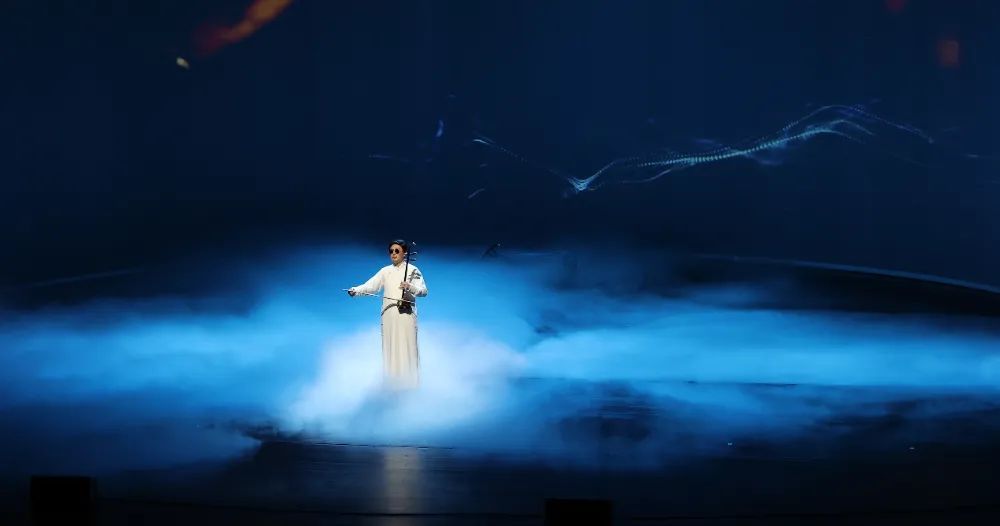"China • Shanghai in Intangible Cultural Heritage" : Fengxian District intangible cultural heritage project appeared on CCTV Golden time
On October 12, the large-scale cultural program "China • Shanghai in Intangible Cultural Heritage" was broadcast at 20 PM primetime on CCTV-1 CCTV comprehensive Channel. Two national intangible cultural heritage projects, such as Jiangnan Sun Erhu Art and Fengxian Rolling Lamp, participated in the recording.
Why is Fengxian rolling lamp called the "King of 100 lamps"? What are the wonderful playing skills of Jiangnan Sun's Erhu art? What kind of wonderful fate does Jingwu Wushu have with break dance? How long does it take to design the perfect presentation of a dragon and phoenix cheongsam? What is particular about the selection of erhu bowstring in the making technique of Shanghai folk Musical Instruments? What is the difference between Shanghai cashmere embroidery and other traditional embroidery? Let's follow "China in Intangible Cultural Heritage" to find out.
Shanghai has a wealth of intangible cultural heritage, including 63 national intangible cultural heritage and 273 municipal intangible cultural heritage. The vertical and horizontal geographical pattern of the Huangpu River and Suzhou River gives Shanghai the grandeur of the river and sea and the tenderness of the water town, and also gives birth to the unique Shanghai style charm of Shanghai intangible cultural heritage.
Fengxian has a unique geographical location, under the infiltration of the two cultures, formed a unique cultural style and profound traditional cultural heritage. At present, there are 63 third-level intangible heritage projects in the region. Among them, two national intangible cultural heritage projects are Fengxian Rolling lamp and Jiangnan Sun Erhu art.

The Shanghai part of the large-scale cultural program "China in Intangible Cultural Heritage" jointly produced by the China Media Group and the Ministry of Culture and Tourism will be broadcast on cctv Comprehensive Channel (CCTV-1) at 20:00 on October 12, and the exclusive premiere of the central video network will be recorded by two national intangible cultural heritage projects in Fengxian District.
Fengxian roll lamp
Fengxian Roller lamp pays attention to the display of "force", the performance form is bold and free, is often used in the folk festival activities of the art form, many times on behalf of Shanghai to participate in national and international cultural promotion activities. Zhelin Town Fengxian District has been named "the Hometown of Chinese folk culture and art" (Rolling lamp) for six consecutive years by the Ministry of Culture and Tourism. In 2008, approved by The State Council and promulgated by the Ministry of Culture, "Fengxian Rolling Lamp" was selected into the "Expanded List of the first batch of national intangible Cultural Heritage representative projects", becoming a veritable "national treasure" and known as "a Chinese absolute".

Jiangnan Sun Erhu art
The Erhu art of Jiangnan Sun family has important value and inheritance significance in the history of Chinese erhu development. The uniqueness and artistic value of its musical instrument shape, composition and playing technique are recognized classics in the field of Erhu. Sun's works originated from Jiangnan folk and widely absorbed many types and styles of folk music. Under the nourishment of Jiangnan culture, various possibilities of Erhu sound are explored. Mr. Sun Wenming, the representative figure of Sun's Erhu art in Jiangnan, is a famous Chinese folk musician. His 11 surviving works are Liubo Qu, Sifang Qu, Send to Listen, Play Music, Night Jing Sound, Spring and Autumn Festival, Renjing Anxin, Volunteer Army Returning to China, Du Shiniang, Erqin Bright and Send to Spring. In 2020, approved by The State Council and promulgated by the Ministry of Culture and Tourism, "Jiangnan Sun Erhu Art" was selected into the fifth batch of national intangible cultural heritage representative projects list.

 渝公网安备 50010702504639号
渝公网安备 50010702504639号